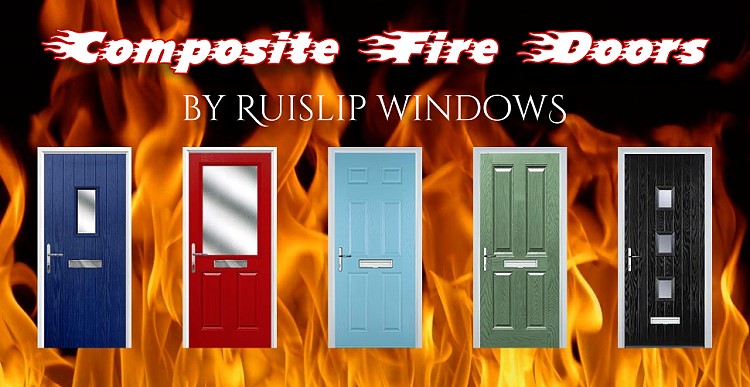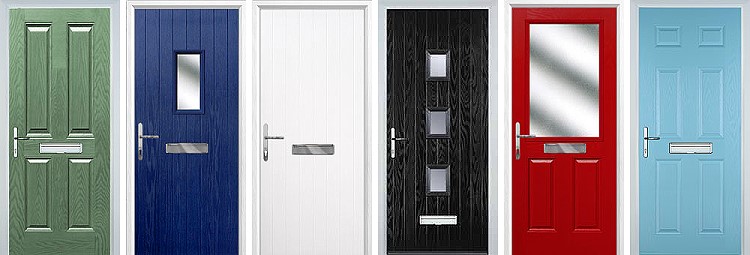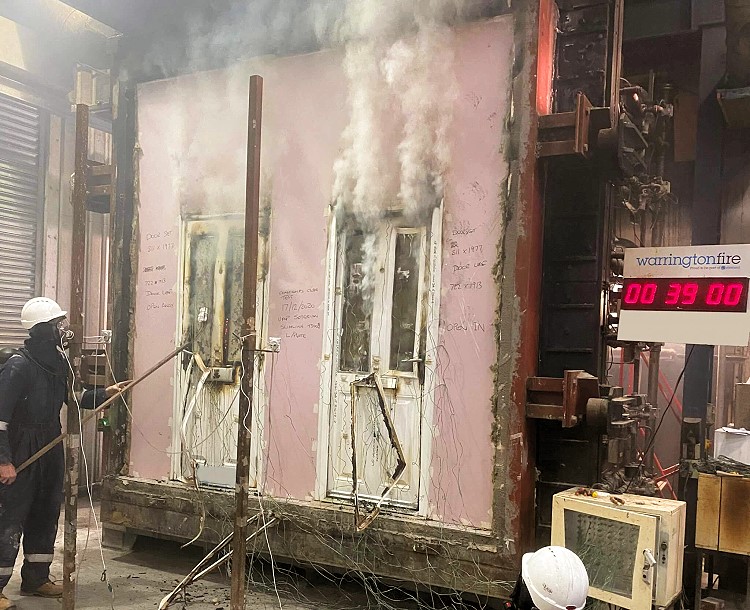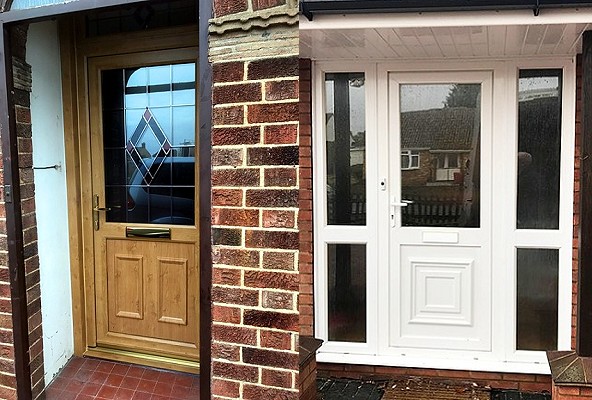
A composite fire door is visually very similar to a standard composite door but with the added protection of specific fireproof materials. Controlled and exacting manufacturing standards coupled with rigorous third party testing* for fire doors not only demonstrates integrity against fire but also delivers performance relative to smoke control, security, weather, sound insulation and thermal performance.
*Bi-directional tests (tested on both sides of the door) are conducted by third party UKAS accredited test centres. (UKAS is the national accreditation body for the UK).
Why would I need a fire door?
Fire doors actively help to control the spread of fire and smoke, allowing you vital time to evacuate safely. It is a legal requirement for residential apartment blocks to have an FD30* entrance door fitted. It is also an essential consideration for houses of multiple occupancy and any house that has an internal door leading from an integral garage into the home. Any new build or home renovation that has three or more floors must have fire doors fitted to every habitable room that leads from a stairwell. This applies to loft conversions where an extra floor has been added to a two-storey home.
*FD30 means the door has been tested and proven to withstand fire for 30 minutes.
Why would I choose a composite fire door?
Composite doors were designed to emulate a traditional painted wooden door without any of the maintenance concerns associated with timber doors. Composite fire doors are available in both traditional and contemporary styles, with toplight and glazing options, a wide choice of colours and approved door furniture. You don’t have to compromise on looks, style, security or protection.

How are fire doors tested?
Doorsets (the full door, frame, any toplight and door furniture) are furnace tested at a UKAS accredited test laboratory. The doorset is secured into the furnace wall and is then fire tested on both the internal and external sides. Sensors are attached to the face of the door and record the performance of different elements of the doorset, such as deflection of the doorleaf and temperature of the furnace. The duration of the test is the number of minutes for which the doorset is to be classified.
The results of this furnace test form a fire door test report, detailing the exact specification of the product and how it was tested. It’s important to remember that the fire test report demonstrates how one particular sample fire doorset performed at one point in time.
The fire door test report is then combined with third party certification. The manufacturer ensures that critical factory production control systems are put in place and are regularly audited, together with the control of raw materials and components. This means that every doorset is manufactured to the same exacting standards and specification as the original doorset in the furnace test.


Courtesy of Guardsman Fire Doors.
All our FD30 fire doors have been tested to BS476 Part 22, and are subject to the Q-Mark enhanced security scheme. In addition, the doors have also been tested to BS EN 1634-3 smoke control test and comply with PAS023/PAS024 security accreditations.
For more information on our composite fire doors please contact us:
- By email: office@ruislipwindows.co.uk
- By phone: (020) 8868 1133








